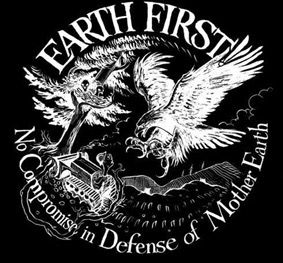Ecoterrorism
(Final)
Ecoterrorism is when “people or groups commit or threaten
to commit violent acts against people or property in support of environmental
causes.” (RUSI, 2022) Due to eco-terrorism being an underground and unregulated
series of groups, there are no clear rules as to what a group is allowed to or
not allowed to do. Because these are largely renegade or revolutionary group,
federal law does not apply. There are two main groups within the United States
that have caused our government and many corporations trouble over the last several
decades.
The Earth Liberation Front (ELF) was established in Brighton, England (1992). They
believed criminal acts would further push their environmentalist agenda than
peaceful protest. Their attacks were mainly focused on property, not people, to
cause economic damage. They believed a rollback of industrialization would best
preserve the environment. Mostly targeted research labs (primarily animal or
GMO), multinational organizations, and the logging industry. (Leader and
Probst, 2010)
The Animal Liberation Front (ALF) emerged in United
Kingdom (1976), and currently has presence in 40 countries around the world.
Their core ideology is as follows: free animals from abuse, damage those
profiting from the suffering and exploitation of animals, expose hidden
cruelties against animals through non-violent actions and freeing of animals,
and take all necessary precautions to prevent harm to animals or humans.
Despite calls for nonviolence in their core ideology, they have claimed
responsibility for arson and vandalism on animal research facilities, farms,
restaurants, and other businesses considered harmful to animals (fur companies,
mink farms, etc.). Additionally, there have been bombings, arson, and attacks that
have resulted in injuries regardless of their promise to ensure human safety.
(Counter Extremism Project, 2022)
In the United States, often times, groups from these two
would split off from the main groups and come together in smaller “cells”
referred to as “the family” because they often shared discontent with the same
company’s and had similar plans of action (Counter Extremism Project, 2022). Though
the ELF was more adamant about not harming human lives than the ALF, there was
nothing to stop individuals from separating and creating their own, more
violent groups such as the Animal Rights Militia or the Animal Liberation
Brigade. For example, the Animal Liberation Brigade (ALB) is open to violent
and non-violent methods as long as results can be seen (CSIS 2022). The cells
that would form out of these primary groups were often more militant and eager
for change than leaders of the main groups. Especially because most people in
these groups would often be socially progressive, they began to expand their
like causes past the environment or animals, they began to also promote
communism, LGBT+ acceptance, etc.
The height of activity for these kinds of groups was
during the 90’s and early 2000’s. After the terrorist attack on 9/11, the
government started hankering down on domestic terrorists and remain vigilant
today. Additionally, as technology has advanced exponentially, the likelihood
of doing jail time for no real change is almost assured. While I don’t agree
with using violence to affect change, I do admire the non-violent acts,
primarily conducted by the ELF, used to stop or hinder irreversible
environmental damage. Though it may be costly to enact, if we required
sustainability rather than recommended it, things like eco-terrorism would not
be a problem.






I wonder how many of these eco-terrorists would also call themselves anti-humanists? Do they want better humans, more environmentally responsible humans? Or none at all?
ReplyDeletehttps://www.theatlantic.com/magazine/archive/2023/01/anthropocene-anti-humanism-transhumanism-apocalypse-predictions/672230/